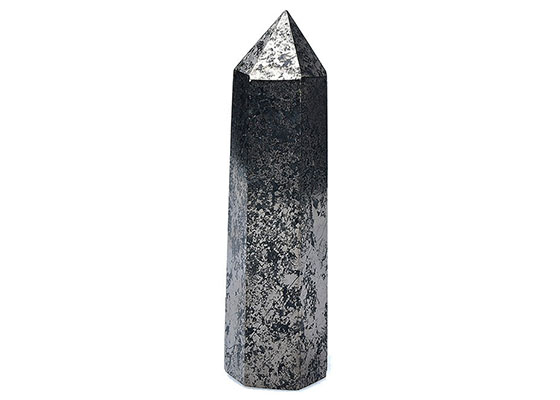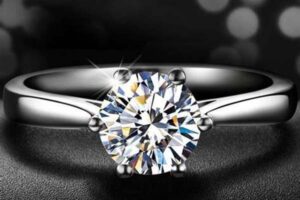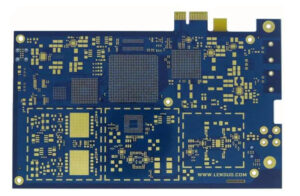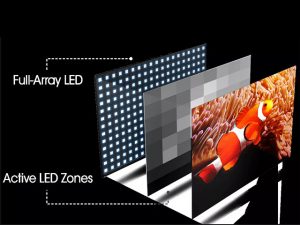
When it comes to sulfide minerals, two of the most commonly confused are marcasite and pyrite. While both minerals share some similarities in appearance and composition, there are also several key differences that set them apart. In this post, we’ll explore these differences and discuss the historical significance and current uses of each mineral.
Physical Characteristics
Appearance
Both marcasite and pyrite are metallic minerals that are often found in the same deposits. They have a similar yellow or brass color and a metallic luster, making them difficult to tell apart at first glance. However, upon closer inspection, marcasite crystals tend to have a more bronze or brassy color, while pyrite crystals are typically brighter and more golden in hue.
Crystal Structure
Another way to tell the difference between marcasite and pyrite is by their crystal structure. Marcasite has a monoclinic crystal structure, while pyrite has an isometric crystal structure. This means that marcasite crystals are elongated and have different lengths on their crystal axes, while pyrite crystals are symmetrical and have equal lengths on all their crystal axes.
Hardness
Both minerals have a similar hardness, with a rating of 6-6.5 on the Mohs hardness scale. This means that they are relatively soft and can be scratched with a knife or a piece of glass.
Cleavage and Fracture
Marcasite has a perfect cleavage in two directions, meaning that it can be easily split into thin sheets. Pyrite, on the other hand, has an uneven or conchoidal fracture, which means that it breaks into irregular pieces.
Chemical Composition
Chemical Formula
Marcasite and pyrite have similar chemical formulas, with marcasite being FeS2 and pyrite being FeS2. This means that both minerals are composed of iron and sulfur, with the same ratio of atoms.
Elemental Composition
While marcasite and pyrite have the same chemical formula, they have slightly different elemental compositions. Marcasite contains more iron than pyrite, and it also contains traces of other elements such as nickel, cobalt, and copper. Pyrite, on the other hand, often contains traces of gold and silver in addition to iron and sulfur.
Properties of Sulfur-containing minerals
Both marcasite and pyrite are part of a larger family of sulfur-containing minerals, which also includes chalcopyrite, galena, and sphalerite. These minerals are important sources of metals such as copper, lead, and zinc, and they are commonly found in sedimentary rocks and mineral deposits.
Historical Significance
Use in ancient jewelry
Marcasite has been used for centuries in wholesale jewelry making, particularly in the Victorian era. It was often used as a substitute for diamonds or other precious stones due to its metallic luster and affordability. Pyrite, on the other hand, was not used as extensively in jewelry, but it has been found in ancient ceremonial objects and amulets.
Importance in the history of geology
Pyrite has played an important role in the history of geology, particularly in the development of our understanding of mineral formation and crystal structures. In the early 19th century, French crystallographer René Just Haüy used pyrite crystals to develop his theory of crystal symmetry, which revolutionized the field of mineralogy.
Role in contemporary jewelry
Today, both marcasite and pyrite continue to be popular choices for jewelry-making. Marcasite is often used in vintage or antique-inspired pieces, while pyrite is used in more modern designs. Both minerals are affordable and versatile, making them popular choices for designers and consumers.
Uses
Industrial uses
Pyrite has several industrial uses due to its high sulfur content. It is commonly used in the production of sulfuric acid, which is used in a variety of applications including fertilizers, dyes, and detergents. Pyrite is also used as a source of iron in the production of steel and other alloys.
Jewelry and ornamental uses
Both marcasite and pyrite are popular choices for jewelry and ornamental objects. Marcasite is often used in vintage-inspired pieces such as Art Deco or Art Nouveau jewelry, while pyrite is used in more contemporary designs. Both minerals can be cut and polished into a variety of shapes and sizes, and they are often set in silver or gold settings.
Differences between Marcasite and Pyrite
Physical Differences
As we’ve already discussed, marcasite and pyrite have several physical differences that make them easy to distinguish. Marcasite crystals tend to have a more bronze or brassy color, while pyrite crystals are brighter and more golden in hue. Additionally, marcasite has a monoclinic crystal structure, while pyrite has an isometric crystal structure. Finally, marcasite has a perfect cleavage in two directions, while pyrite has an uneven or conchoidal fracture.
Chemical Differences
While marcasite and pyrite have the same chemical formula, they have slightly different elemental compositions. Marcasite contains more iron than pyrite, and it also contains traces of other elements such as nickel, cobalt, and copper. Pyrite, on the other hand, often contains traces of gold and silver in addition to iron and sulfur.
Differences in Uses
While both minerals are used in jewelry-making, marcasite is often used in vintage or antique-inspired pieces, while pyrite is used in more contemporary designs. Pyrite also has several industrial uses due to its high sulfur content, while marcasite is primarily used in jewelry and ornamental objects.
Similarities between Marcasite and Pyrite
Physical Similarities
Despite their physical differences, marcasite and pyrite share several similarities. Both minerals are metallic and have a similar yellow or brass color, as well as a metallic luster. They also have a similar hardness, with a rating of 6-6.5 on the Mohs hardness scale.
Chemical Similarities
As we’ve already discussed, marcasite and pyrite have the same chemical formula, with the same ratio of iron and sulfur atoms. They are both part of a larger family of sulfur-containing minerals, which also includes chalcopyrite, galena, and sphalerite.
Similarities in Uses
Both marcasite and pyrite are used in jewelry-making and ornamental objects. They are affordable and versatile, and can be cut and polished into a variety of shapes and sizes.
Conclusion
While marcasite and pyrite share some similarities in appearance and composition, there are also several key differences that set them apart. While marcasite is primarily used in jewelry and ornamental objects, pyrite has several industrial uses due to its high sulfur content. Both minerals have played important roles in history, with marcasite being used in ancient jewelry and pyrite contributing to the development of our understanding of mineral formation and crystal structures. Today, both minerals continue to be popular choices for jewelry-making and ornamental objects.




